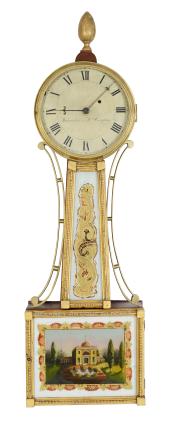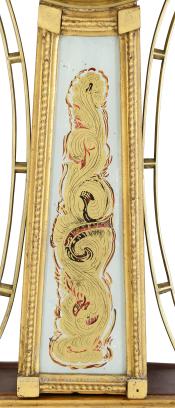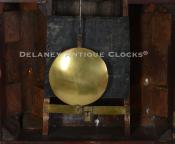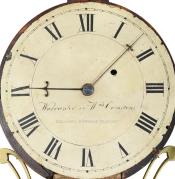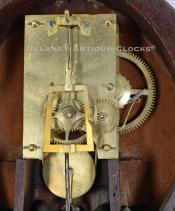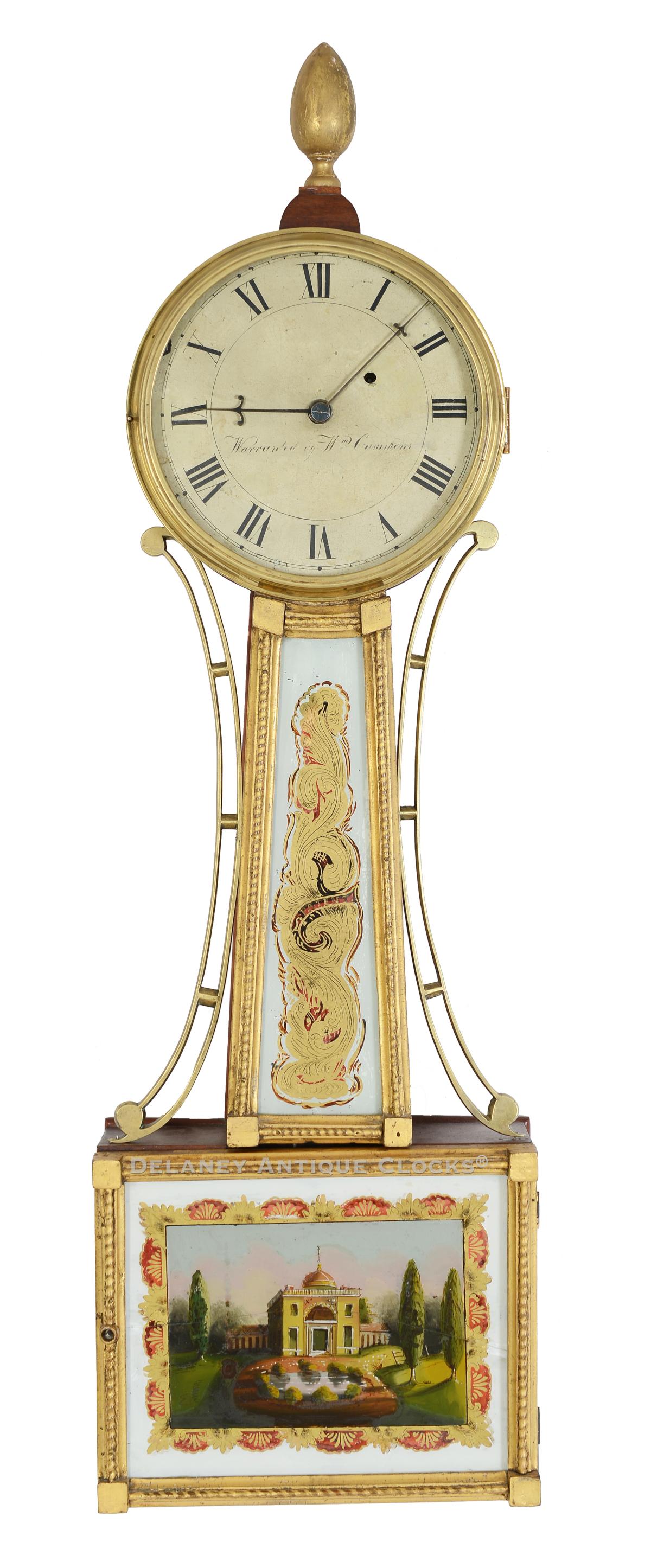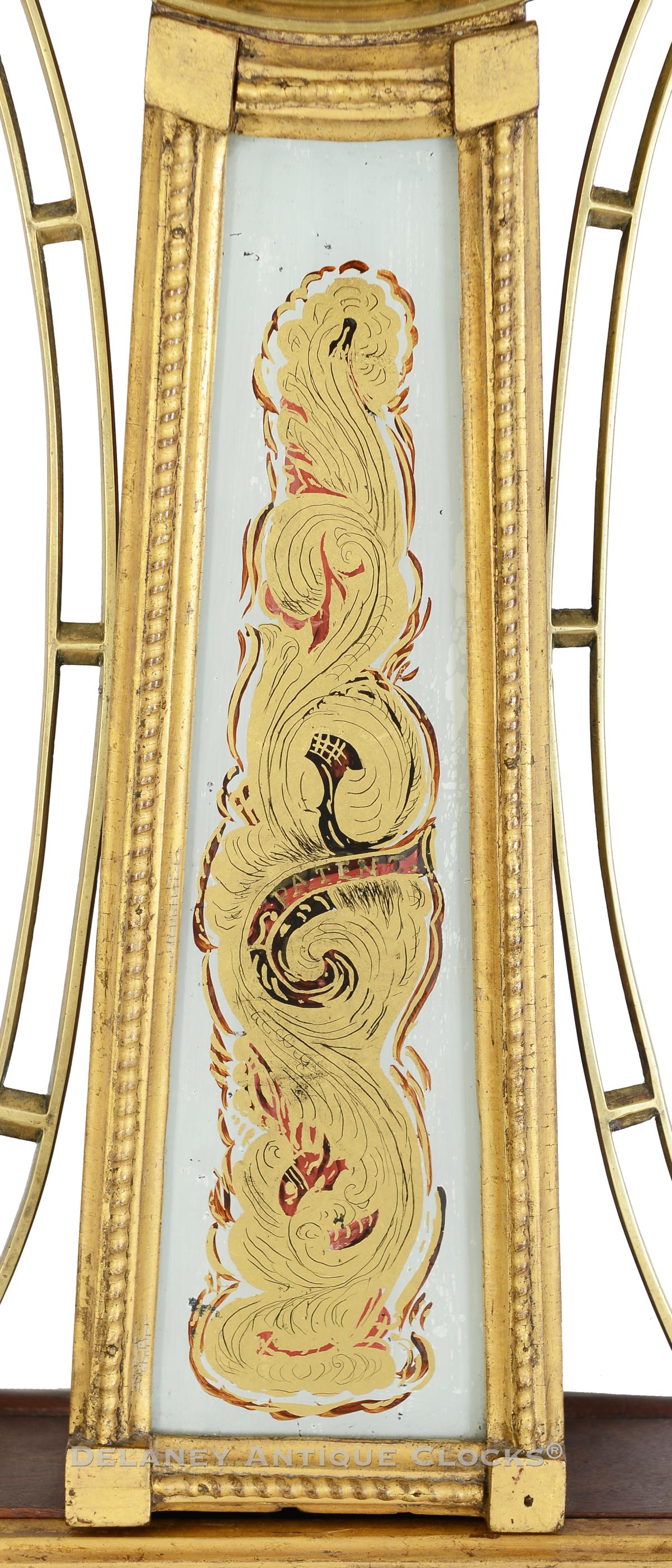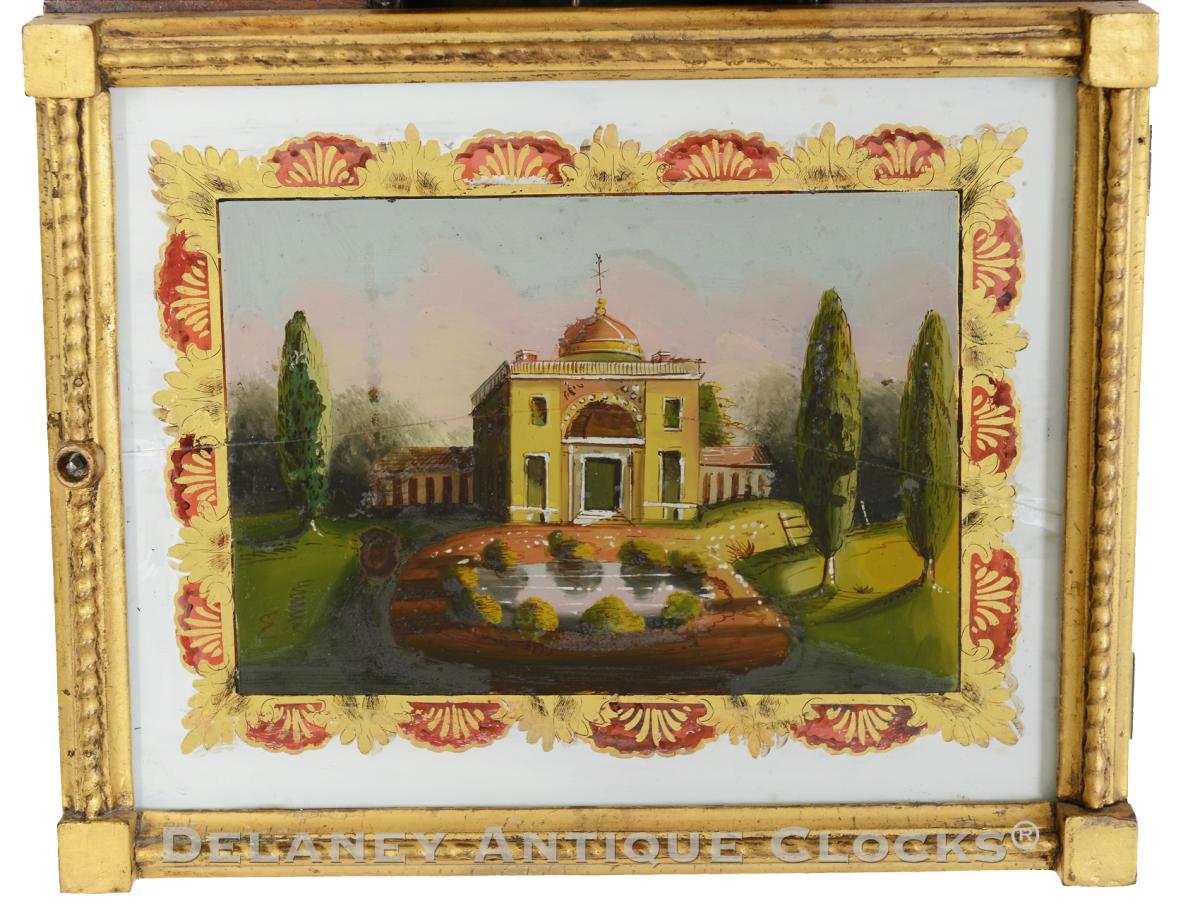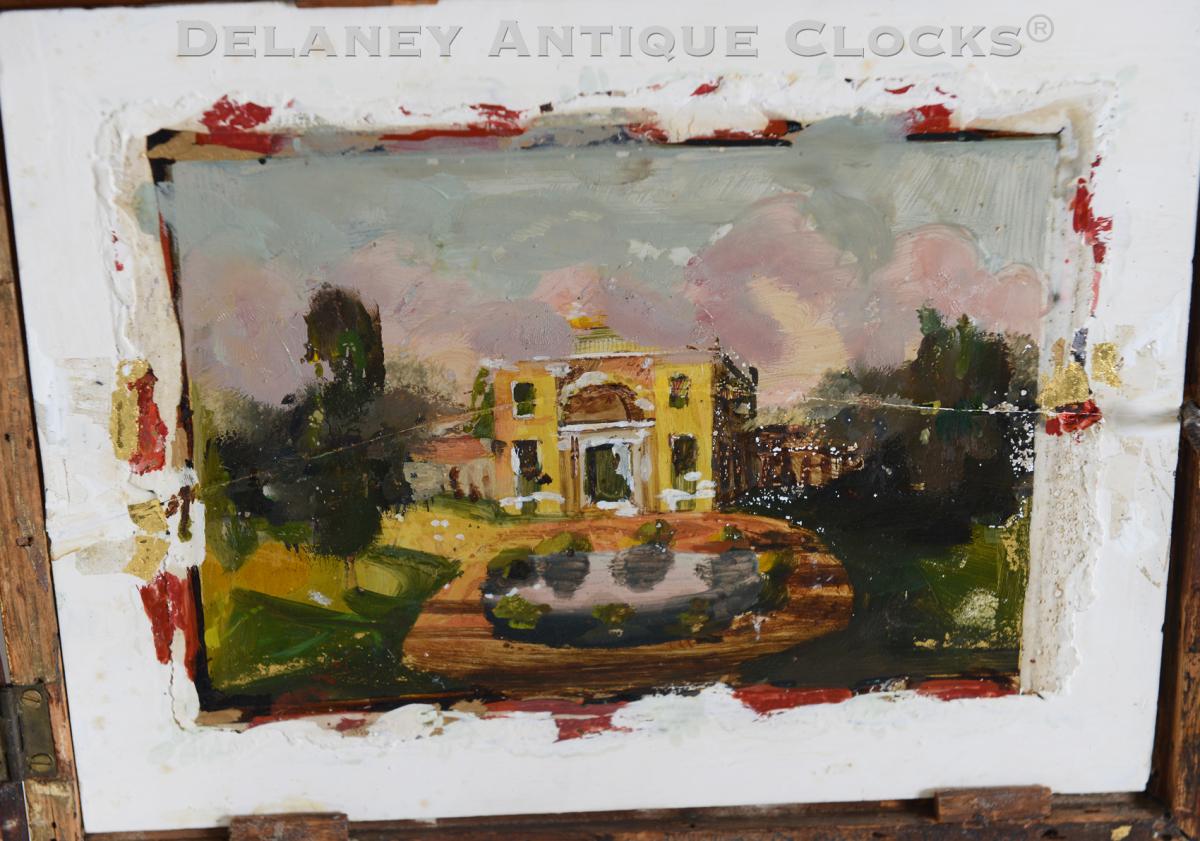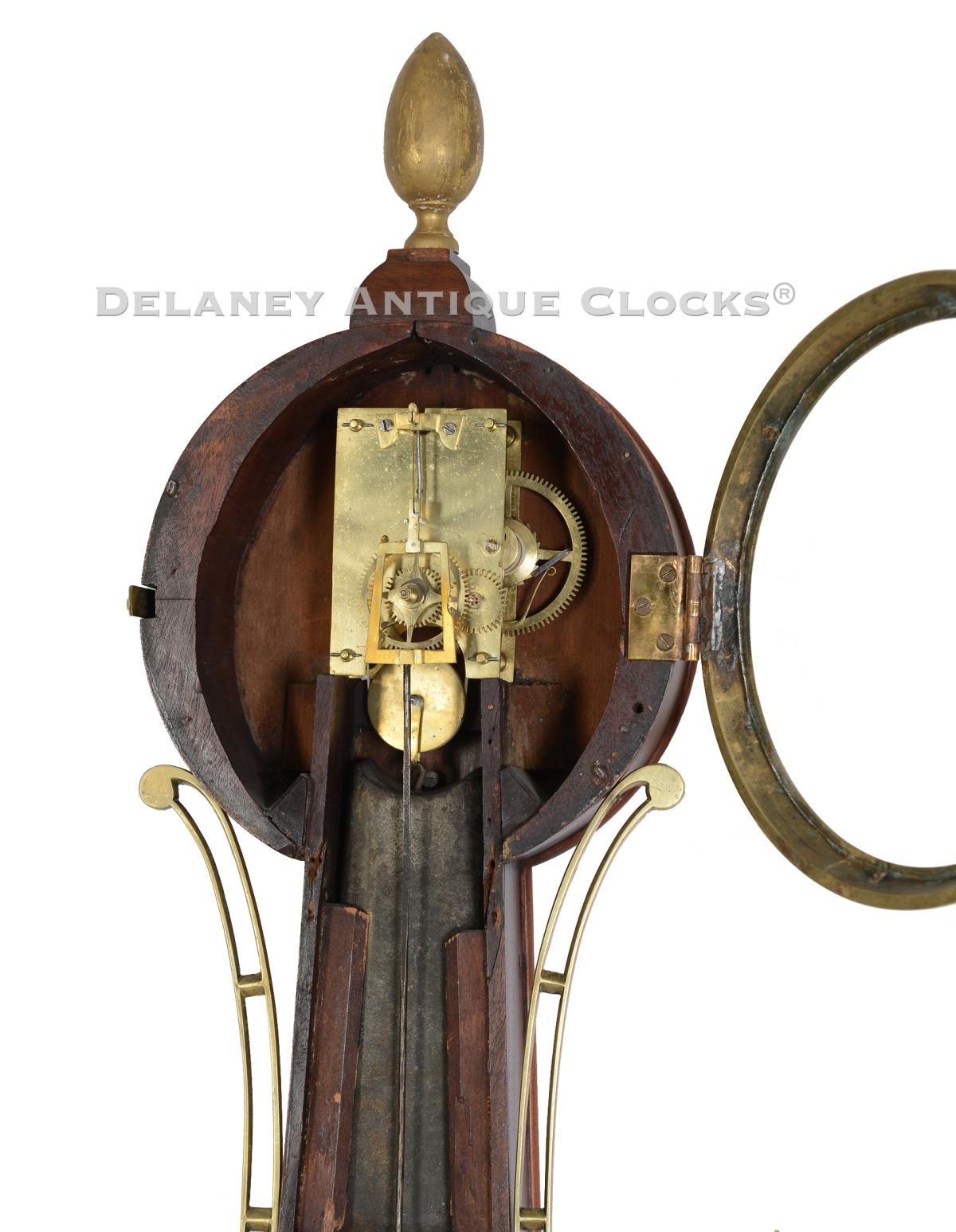A gilt framed wall timepiece or banjo clock Warranted by William Cummens. Roxbury, Massachusetts. EEE-17.
This decorative Federal Massachusetts timepiece, or "Banjo clock," is not just a work of art but a piece of history. Crafted in Roxbury between 1815 and 1820 by the renowned William Cummens, it is a working link to the past.
This is a colorful example. The case is made of mahogany and retains an older finish. The gilded frames are decorated with applied rope moldings and corner blocks. They support colorfully hand-painted tablets, both of which are original to this clock.
The lower tablet is cracked across the middle. It has been repaired and is now stable. The scene depicts a street-side view of a large residence with outbuildings on both sides in the back. The main building features a Bullfinch-style dome on the roof, a design element popularized by architect Charles Bulfinch. A reflecting pool and garden are located in the foreground. This is an attractive scene.
The cast brass side arms are formed to hug the case sides closely. The cast brass bezel is fitted with clear glass and opens to a painted iron dial featuring Roman-style numerals that mark the hours of the day. The Clockmaker's signature is signed across the dial. It reads, "Warranted by Wm Cummens / ROXBURY." The hand file steel arrow pointed hands indicate the time.
The weight-driven movement is of excellent quality. This movement is constructed in brass and is designed to run for eight days. The brass rectangular-shaped plates feature a half-round cutout at the bottom. Steel shafts support the brass gearing. The escapement is a recoil design. The pendulum hangs from a t-bridge suspension. The rod is steel, and it supports a brass-covered bob. The works are secured to the case with two screws that pass through the rear plates and screw into the backboard.
This fine clock measures approximately 34 inches long overall.
Inventory number EEE-17.
For more information about William Cummens and wall timepieces, please read Paul J. Foley's book Willard's Patent Time Pieces.
William Cummens was born in 1768 and died in Roxbury, Massachusetts, on April 20, 1834. He was 66 years old. William worked in Roxbury as a clockmaker as early as 1789. He learned clockmaking from Simon Willard. In fact, he was an apprentice in Willard's shop about the same time that Elnathan Taber was training. After serving his apprenticeship, Cummens stayed in Roxbury and worked alongside the Willard clockmaking family for many years. Based on the large number of clocks that have survived, Cummens and the Willards must have had an excellent relationship with one another. In this Roxbury location, Cummens had direct access to the same suppliers, such as case makers and dial painters, that the Willard family used. As a result, his clocks are nearly identical in form. Cummens was one of the first persons authorized by Simon Willard to manufacture Simon Willard's Patented Timepiece. The patent was granted in 1802. Over the past 55-plus years of buying and selling clocks, we have owned and sold a substantial number of tall case clocks, Massachusetts shelf clocks, and wall timepieces signed by this important clockmaker.

